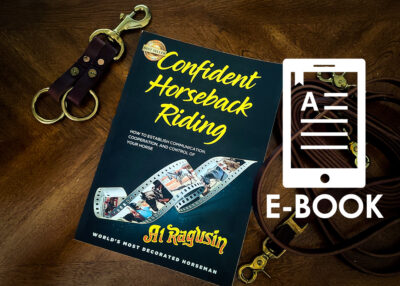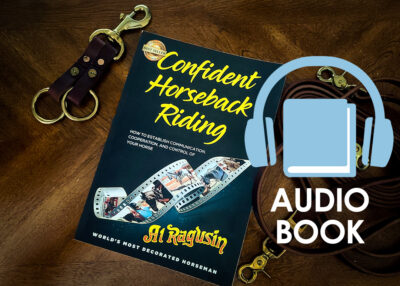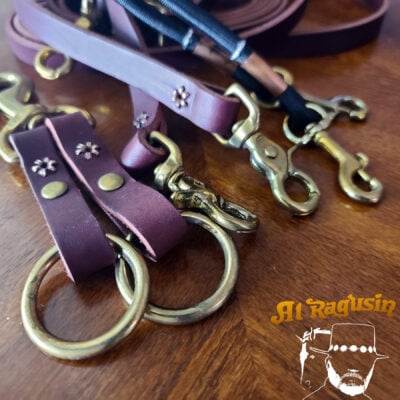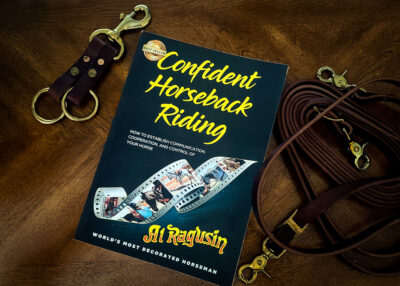Show Kindness to Your Horse. As a horse trainer, understanding your horse and communicating with them is essential. Horses understand the language of herd instincts, which means that if you want to communicate with them, you will need to do it in their language.
Table of Contents
Addressing a Common Horse Issue: When a Mare Refuses to Jump
Recently, a horse owner named Becky reached out to me with a question about her mare not wanting to jump at certain jumps and throwing her teenage daughter. The mare would jump some jumps and not others, and when she came back to the jump she previously balked at, she would take it with ease. I explained that there are two reasons why a horse may refuse to jump – either a medical or physical issue, or they simply won’t.
Investigating the Mare’s Behavior
When Becky brought her mare to my ranch, I noticed that the halter had been left on for a long time, which explained why some of the hair on her head was missing or thin. To get the mare accustomed to her new surroundings, I walked her around the ranch and introduced her to the other horses. When I tied her to my horse walker, the mare reared up and broke the halter. It turned out that the mare had never been on a pull-type walker before, which led to her breaking free.
Understanding the Importance of Leadership
It is essential to understand the importance of leadership with horses. Becky’s mare had been babied all her life, and as a result, she had developed a stubborn streak that made it challenging to train her. When she refused to follow commands, the trainers simply gave in to her, which reinforced her behavior.
Training a Horse to Follow Commands
I shared a story about a 17-year-old girl whose father bought her a horse. Through a training session, the girl learned how to train her horse to follow her commands, and by doing so, she established herself as the leader. Had the same been done with Becky’s mare when she first started taking over, she wouldn’t have developed a stubborn streak that led to her refusing to jump.
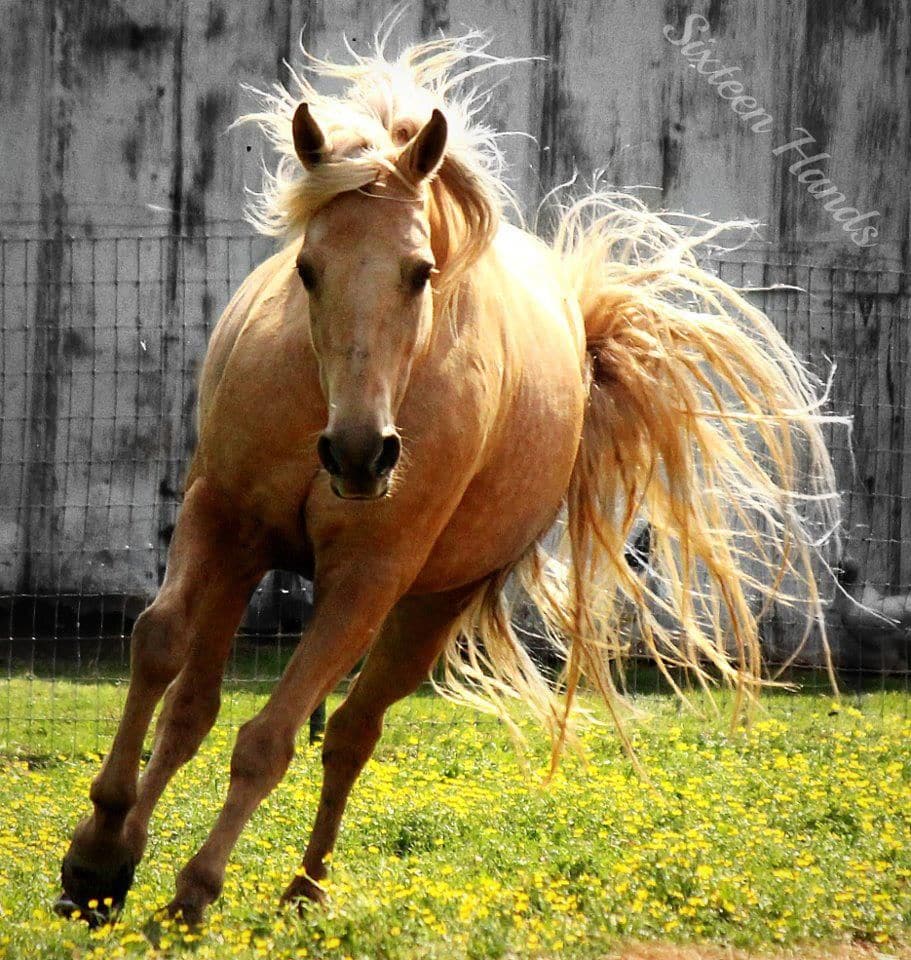
Conclusion
As a horse trainer, it is crucial to understand your horse and communicate with them in a language they understand. Leadership is essential, and you must establish yourself as the leader to train your horse to follow commands. By doing so, you will avoid many of the issues that Becky faced with her mare.
Show Kindness to Your Horse
Original Show Kindness to Your Horse Article:
I have written repeatedly and consistently about understanding your horse and how to communicate with him or her through the only language they understand “herd instincts”. It is not important to them whether or not you understand it but it is their world and it is the only one they know. So if you want to communicate with them you will have to do it in their language.
I wrote last month about my opinions of what constitutes a Horse Exhibitor, Horse Trainer, and a Horseman and why I felt there was such a big difference. I also told you that I would cover the question written to me by Becky about her mare not wanting to jump at certain jumps and throwing her rider “her teenage daughter”. Some of the jumps she would jump and others she wouldn’t, then coming back around to the jump that she balked at she would take that same jump at ease the second time around. I told her there are two reasons why she won’t jump, medical or physical. In other words she can’t or she won’t. When the mare arrived at my ranch she led with no problem.
I tied her to my horse walker that was not turned on and she stayed tied very well. I got her stall ready and that is when I noticed as I removed her halter that some hair was missing and in some areas the hair was very thin where the halter was on her head. I assumed at that point that the halter had been left on for a long time. It is not uncommon for people to bring me horses that they don’t remove the halter they just unsnap the lead. To get the mare acquainted with her new surroundings I walked her around the ranch and around the other horses. Show Kindness to Your Horse
I then took her to the wash rack and again I tied her to the walker. I did the same to the other three horses and then I turned the walker on. The mare reared up and sat against the pull scaring the other three horses and had them all upset. I immediately ran to the walker and turned it off. I unhooked her and tied her to a tree where she stood very well.
The owner purchased this mare for a lot of money in Venezuela and for the last three years she has been in the United States. The mare is 14 years old and had been a jumper all of her life with a little of dressage training. I guess I just took it for granted that she had been on a walker before because she was kept at the very best of stables. But the owner when asked was not sure if she had ever been on a horse walker. The next day I took her out of her stall and cross tied her and put her saddle blanket on very slowly. I then put the saddle on and pulled the girth also very slowly not to tight but tight enough that the saddle would not slid off. She did not seem to have any problems with this. As I turn my back to get her bit she sat back with such a force that she broke my side rail and snapped the halter as if it was made of a piece of string. My good friend and long time horse trainer, Larry Rodriguez, was standing beside her as I was saddling her and saw the whole episode. Because my back was turned I didn’t see what happened but Larry said she took one step back felt the tension of the rope and sat back with full force.
There was nothing there to scare her she just didn’t yield to the tension of the rope. I bought another halter the strongest one I could find and tied her to the same tree that I had before. She stayed there very well for an hour or so as I was cleaning her stall. When I went to the tree to unhook her I gently pulled the slack out of her lead rope to untie her and she sat back with such a force that she broke the new halter. For a mare that weighs 1200 pounds that halter was no match. Now I suspected why she did not have any hair where the halter was on. I knew she has been doing this for quite a while. I spoke on the phone to the trainer that had her for the last two or three years and they informed me that they did not have any horse walkers. In the country where she came from they did not use any pull type walkers only the push type so that explains the horse walker incident.
When I took her out of the stall the next day and exercised her in my round pen I took two saw horses and put a 2?4 across them about 4 feet high. As I lunged her with no rope she took the jump each time as she came around she could have easily avoided the jump by going around it but she chose to jump instead and cleared the 4 foot jump by at least 2 feet. When I spoke to the trainer that had her last and hauled her to different shows they told me that she had been crossed tied each time that they saddled her but with one difference they had a wall behind the cross tie. Show Kindness to Your Horse
According to her teenage rider she had never tried to pull on the cross tie ropes, so something is not right here. It has been over 4 months since the rider had tried to ride her again and since she was thrown off the last few times she rode they decided to sell her. In part because the trainer said that she could not force her to make the jump and also the teenager was going off to college. Becky told me that this mare had been babied all of her life and could do pretty well as she wanted. This is the total opposite of what the mare needed and wanted, remember she lives by herd instincts either you lead or she does.
Being that the last four months she was traveling to different stables that showed interest in buying her I am sure she was tied and as they saddled her she broke free each time. This surely contributed to them not being interested in her. This mare has lived a charmed life but unless someone wants her as she is or tries to get the stubbornness out which could result in injury or maybe even death because she shows no sign of giving up. She is doomed to a life she will not like and her full potential will never be achieved. This is a human’s fault, maybe the jumping trainer was a good trainer but not a good horseman. Otherwise they would have known what to do. It would have been easy if they would have caught this behavior the first time and convinced the mare that you are the leader much as the alpha stallion is the master of the herd. Now she is the alpha mare and she will tell you what she is going to do and when. To reverse this process would be lengthy and she will never forget that she can do it again at the first opportunity she gets.
Let me ask you…Was it the owners fault? No! She depended on the trainer to do what needed to be done. Nor was it the riders fault as she is not a horse trainer, this falls squarely on the shoulders of the so called trainer. It is not only about training the horse to jump but training it the rules that she must follow. I am so sick and tired of hearing like in this case from this trainer…OH! “She does not like that way so we do it the way she likes”. This is how a horse gets to this point.
Let me tell you a little story about a 17 year old that her Dad bought her a good gentle horse and he wanted her to take riding lessons. I have known this horse for years and it had been trained by Larry Rodriguez from Lavernia, Texas in my techniques of collection reins. I first rode the horse and showed her how to squeeze her legs together to get him to walk and tap him with a crop if he does not respond to her leg pressure. I did not have to tap him when I rode him all I did was squeeze my legs together and he walked off because he knew the tap was coming. I explained to her that he will test you to see if you will enforce the cue.
So when she squeezed her legs together he did not move so she tapped him gently and he still did not move. I instructed her to tap him harder but it was not hard enough. I then asked her to dismount and walk away from him and told her he would not follow her which he did not. I told her to get back on and repeat the cue this time tapping him harder and he did start walking. She practiced this for about 10 minutes and as soon as she did not have to tap anymore the leg pressure did the trick. I told her when she dismounts to walk away from the horse as she did the first time and this time he will follow you.
So she got off of the horse and threw the reins over his head and she walked away from the horse and he followed her around the ring for several turns. Her Dad that was present during the training session started laughing and jumping, he said “I can’t believe it!” He asked, “How did you know this was going to happen?” His daughter commented also that she felt the horse would hate her since she made him do what she wanted. I told them no, he does not think that way he now sees her as the leader and will follow her directions. Not as before when he was the leader because she did not make him do what she wanted.
Had this been done to the mare when she first started taking over we would not be where we are today with her. So in my opinion it is cruel not to take charge when they are looking for your guidance and find security in your leadership.
See ya next month.
Al
Show Kindness to Your Horse

